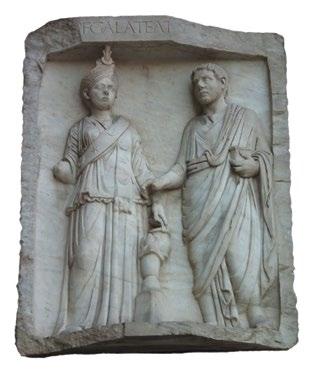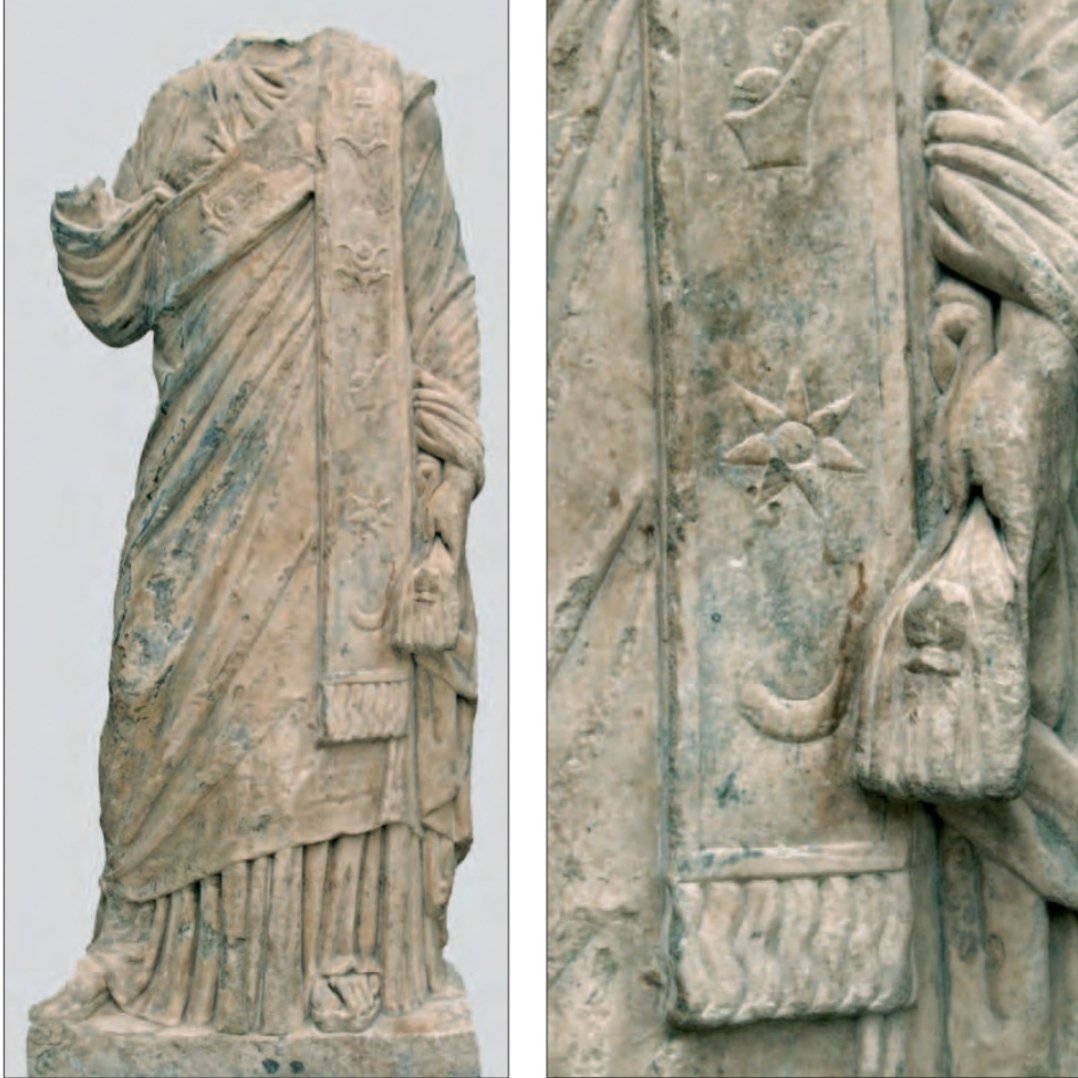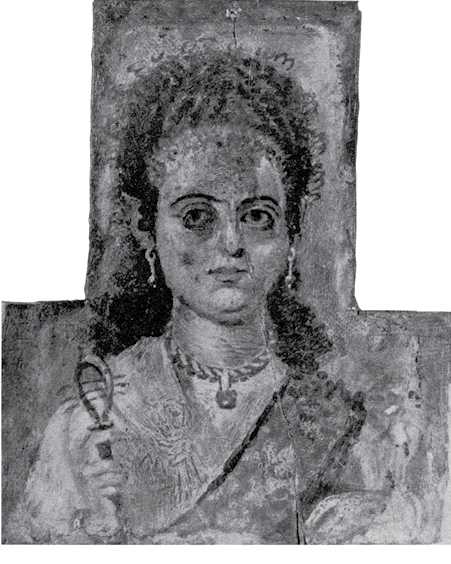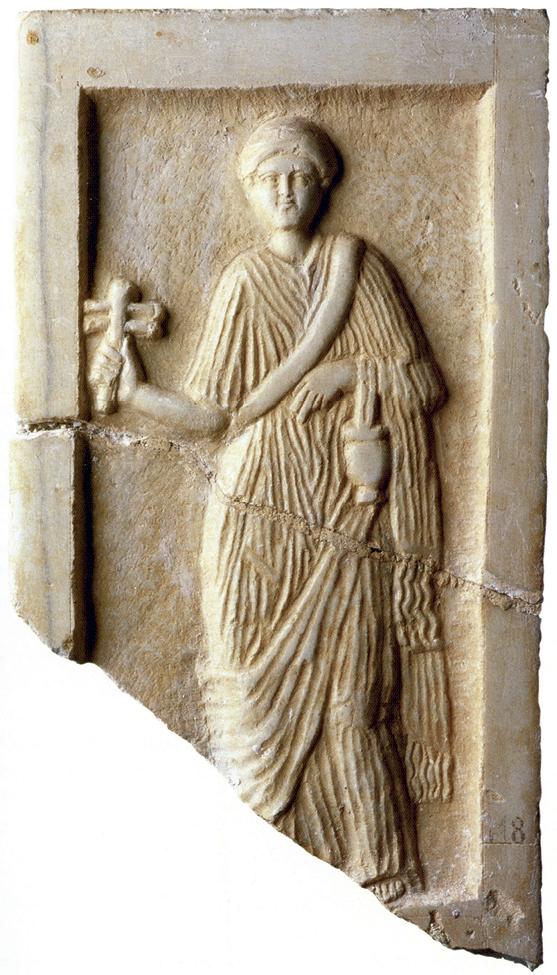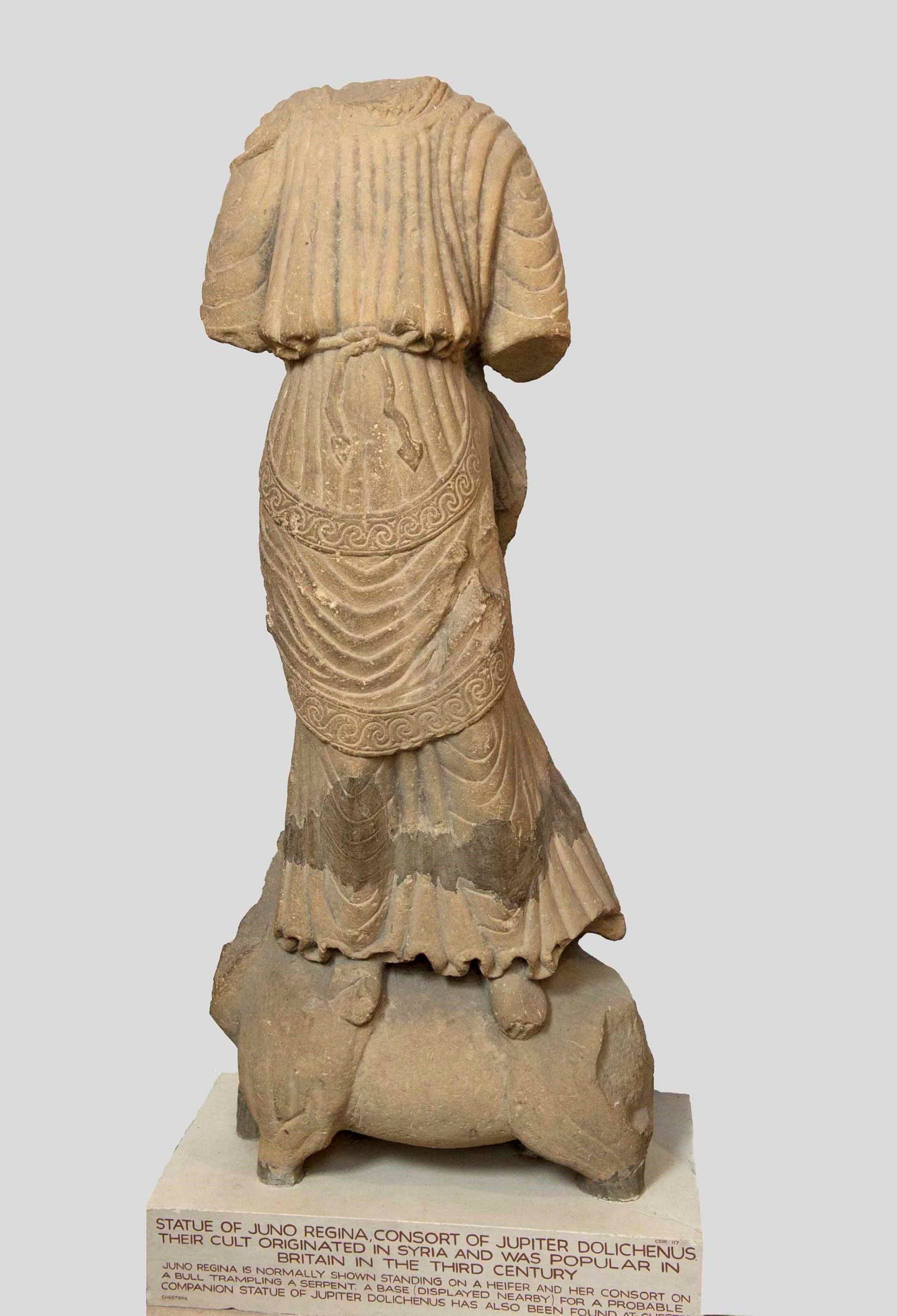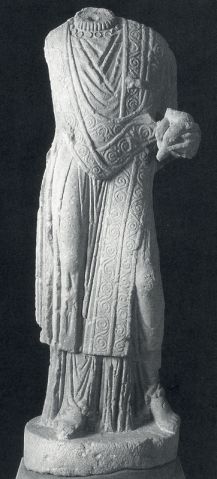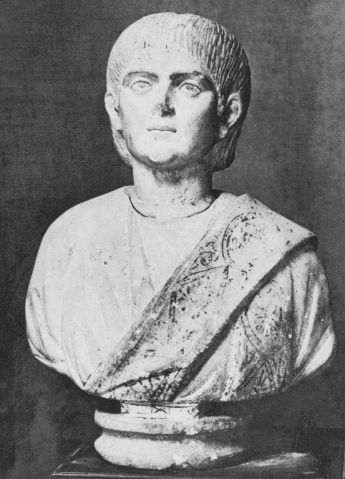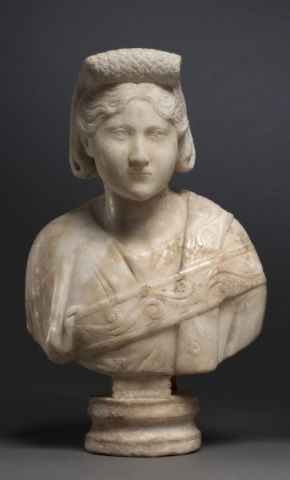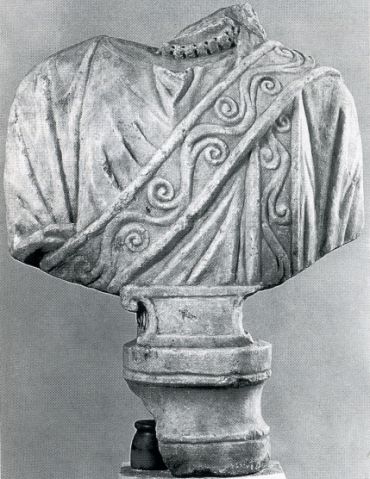
Headless portrait bust of veiled woman. From Balkans (?). Third to earlier fourth century.
LSA database http://laststatues.classics.ox.ac.uk/database/discussion.php?id=2080
“PROVENANCE AND MOST RECENTLY RECORDED LOCATION
The provenance of the bust is unknown. It was recorded in the Bucarest National Museum of Antiquities, inv. no. MNA L 633, by Alexandrescu Vianu 1995.
DESCRIPTION (Subject)
The attire displayed makes sure that the portrayed is a female, although the breast is flat. She is wearing a short sleeved tunic (colobium); the seam of the wide short sleeve is visible at the right arm. A sash with bulgy seams on both sides and a spiral decoration in the middle is draped above the tunic. It ascends vertically to the left shoulder, and in a second layer from the right elbow to the left shoulder. At the base of the neck a portion of a chained necklace of rectangular elements is preserved.
HONORAND AND DATE
The attire displayed by our bust is similar to that of a female statue from the sanctuary of the legionary camp of Carnuntum (LSA-1273) and of a female portrait bust from Asia minor, now in Cleveland (LSA-435).
Alexandrescu Vianu 1995 suggested a date in the Antonine period on base of the portion of hair visible at the left shoulder (see above, ‘Description (Object)), which she associated with hairstyles of that period. The flat, geometrical style of the bust however, and the similarity to the Cleveland bust (LSA-435) made her consider a date in the late 3rd century.
The sash has been interpreted by Alföldi as emulation of the richly embroidered male triumphal robe in the female attire, observable in the later 3rd and earlier 4th century (Alföldi 1970, 145). Similar sashs, however, are also known from depictions of priestresses in the cult of Isis, already in the earlier 2nd century (Eingartner 1991, 8-9. 87-8 and 138-40 cat. nos. 85-88, particularly 88 with the same decoration as our bust). Likewise the portion of hair, associated with Antonine hairstyles by Alexandrescu Vianu 1995 (see above) is possibly related to the Isiac cult (‘Isislocke’). The interpretation of both these iconographic elements will determine the rank and status of the honorand.
The jewellery displayed by our bust is probably the most reliable criterium of date; it provides a date not earlier than the third century.”

